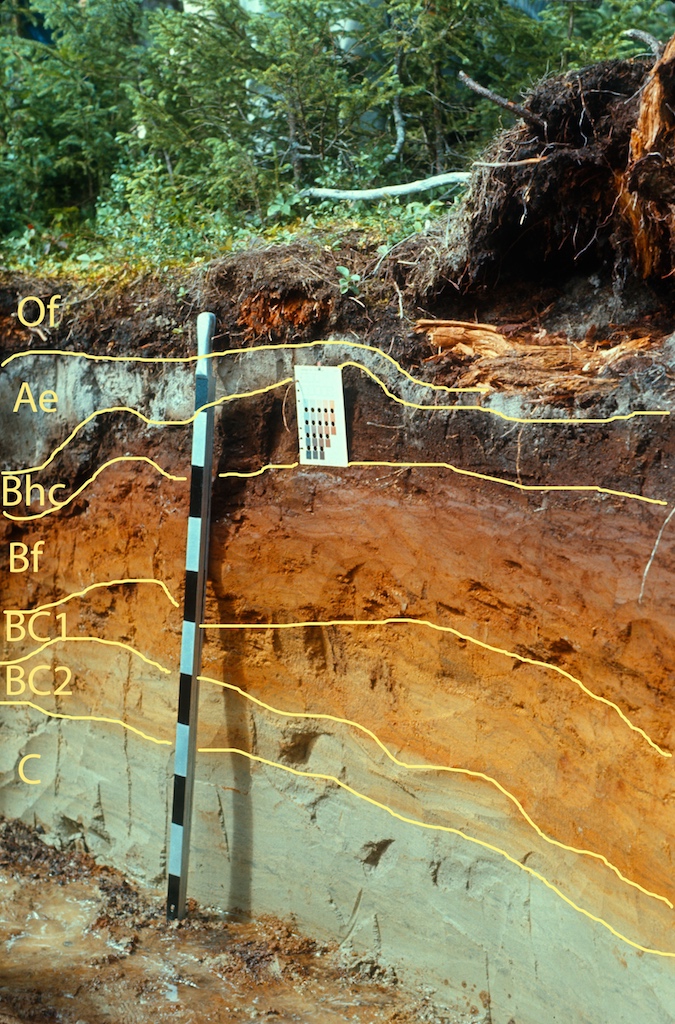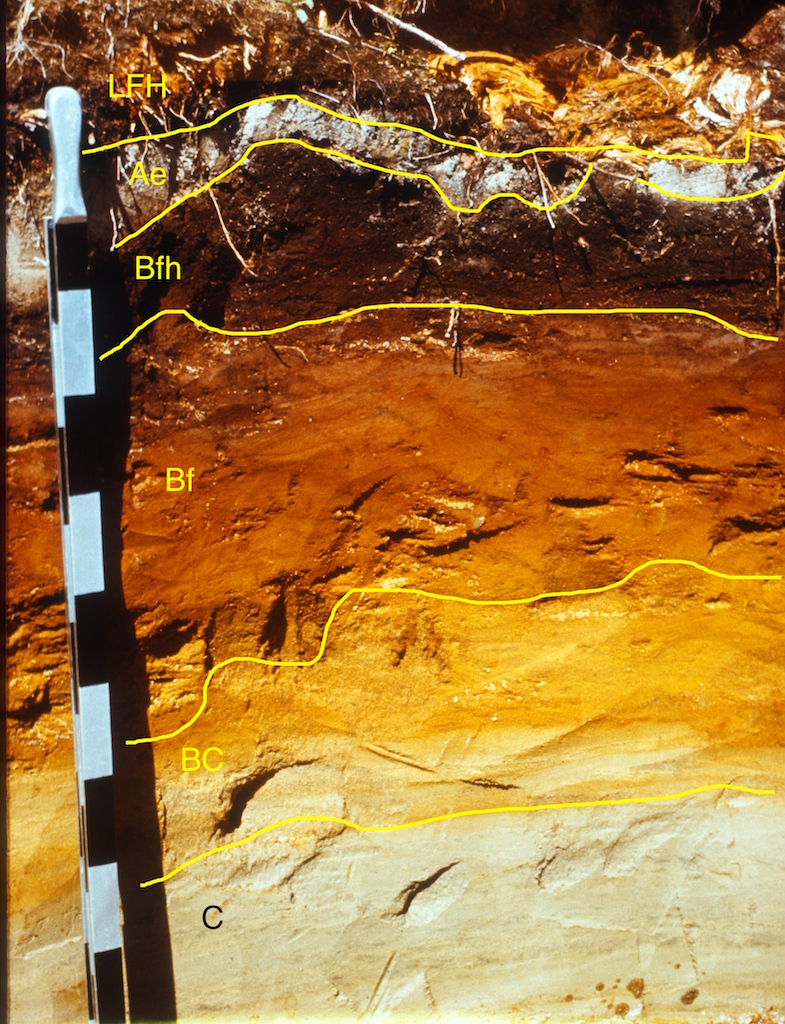Humic Podzol

Humic Podzols have a Bh horizon enriched in organic matter (humus) that has been translocated from the overlying organic horizon (Of in this case) and the bleached Ae horizon. The OM gives the horizon a dark brown to black colour. This Bh horizon also has a cemented horizon – an Orstein horizon. Cemented horizons are assigned a c suffix in the CSSC. The Bhc horizon is underlain by a B horizon with deposited iron (Bf), two transitional BC horizons, and finally a largely unweathered sandy C horizons. Humic Podzols are normally associated with wet soil conditions and the forest vegetation and Bf horizon suggests this is from the drier end of the Humic Podzol range.
Contributor: Darwin Anderson
Ferro-Humic Podzol

This soil has two diagnostic horizons – a Bfh horizons enriched in both iron (f) and organic matter (h) and a Bf horizon enriched only in iron. The Ae horizon in this soil is relatively thin.
Contributor: Soils of Canada slide set
Humo-Ferric Podzol

The Humo-Ferric Podzols occur at the drier end of the Podzol range and lack a well developed B horizon with organic matter deposition (no Bh or Bhf horizon). This soil has a thick bleached Ae horizon overlying a reddish Bf horizon (with iron deposition from the organic layer and the Ae horizon). The large rock indicates this is a coarse-textured till parent material, which is a very common parent material for Podzols in Central and Atlantic Canada.
Contributor: Darwin Anderson
